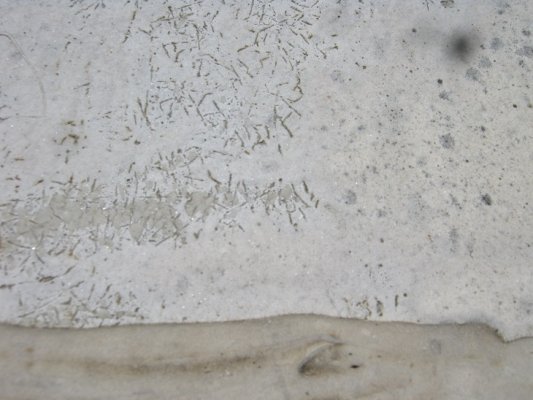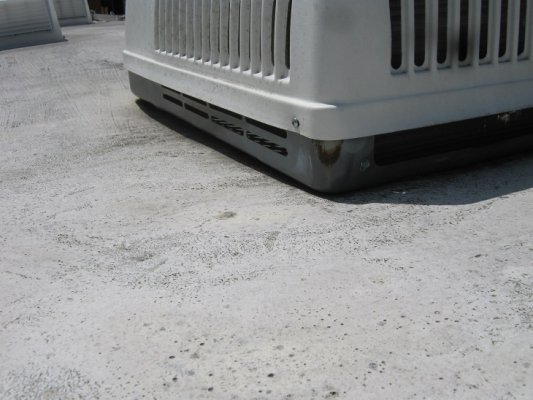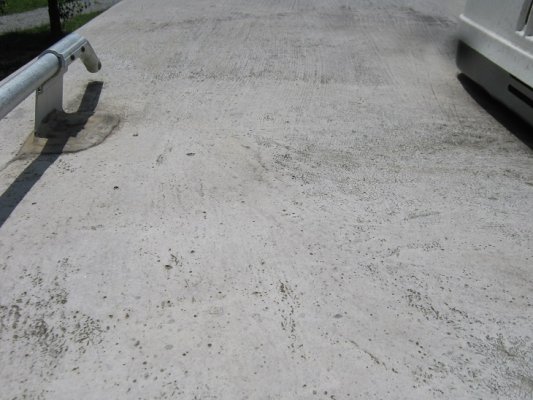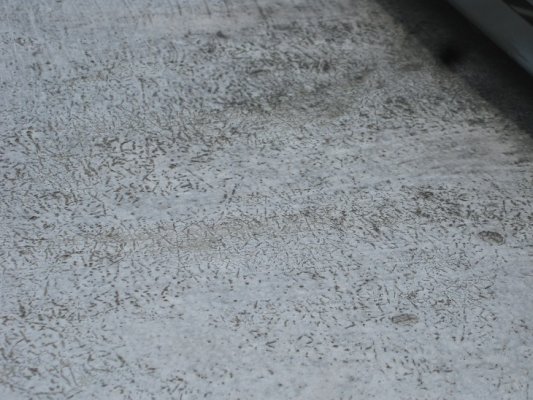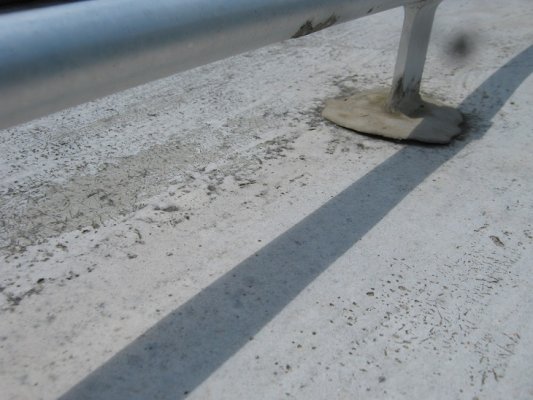Well, it looks like RVers are pretty smart, when we put our heads together!
It finally has stopped raining long enough to try the acetone. It softens the coating somewhat, but only enough to remove half-inch diameter circles in a few places where it appears that a previous bubble might have broken and formed tiny craters. The rest of the area got a little tacky, but wouldn't come off--it's stuck like, well, like a faded decal. The MAGIC of the acetone was that it cleaned a small area well enough to reveal that the black layer below the white layer was not EPDM but D-I-R-T. Note to self: the roof will not take care of itself. Clean it regularly.
As removal of the coating seems difficult if not impossible, a thorough cleaning and scuffing was in order before any attempts to re-coat. Delighted with my results with Zep floor finish on the sides of the RV, I decided to give their version of simple green a try for cleaning the roof. It worked great, and revealed even more. Once the dirt was off, I could see that the coating is so thin in some places that you can actually see the pebbled fiberglass. So yes, it appears that those are brush strokes from an owner-applied coating over the fiberglass (possibly without cleaning or prepping.) I was also able to see where the fiberglass has a small puncture which is the likely source of most of the interior water damage. The scrubbing also allowed me to identify a place where the fiberglass was not sealed along the ridge where it meets with the wall.
Eternabond will likely take care of the leaks. But as I already have spent the money on the liquid roof, I might as well also topcoat it. It will look better, be more cleanable, allow easier inspection, and if the underlying fiberglass has any cracks, it will probably take care of those, too. At any rate, I get to think about that for a while before taking any action because it's getting ready to rain. Or as we say here, "fixin'" to rain. Again.
Everyone's insight has been valuable, and I'm still listening and learning. Thanks.

